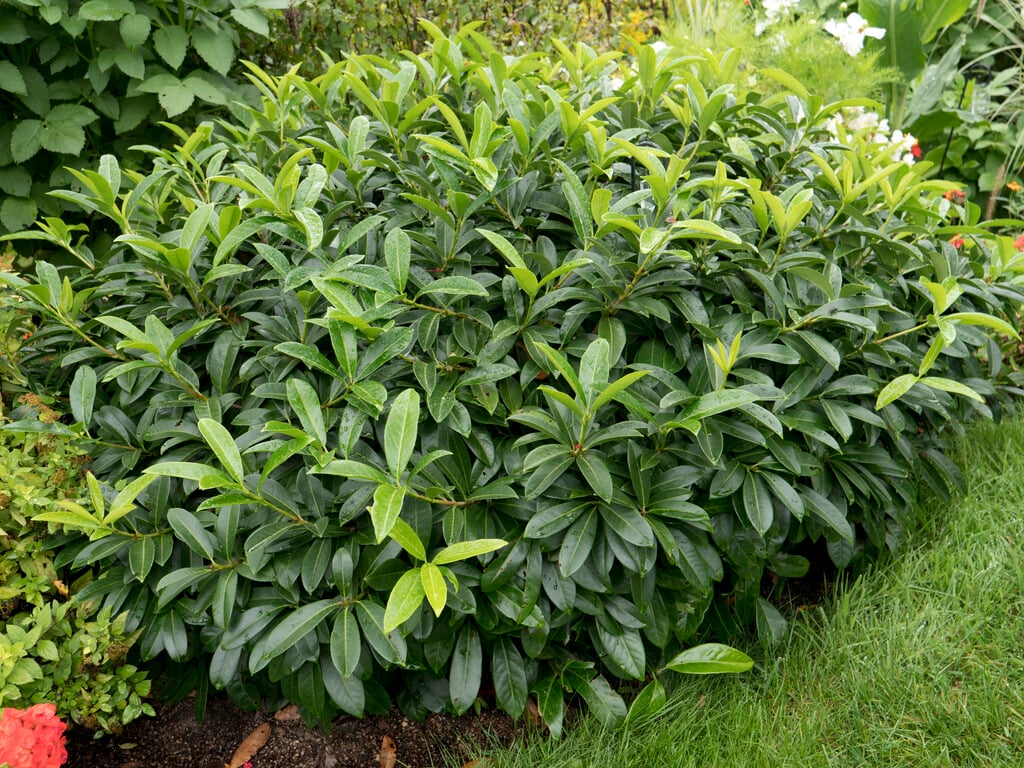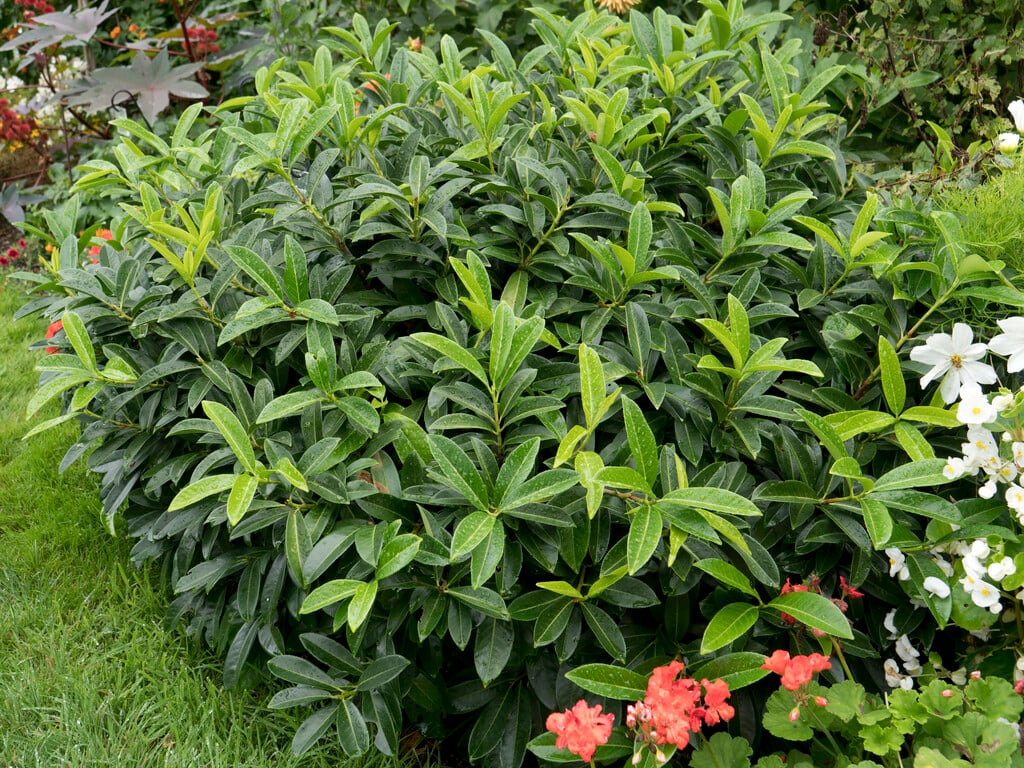Prunus laurocerasus 'Mount Vernon'
cherry laurel 'Mount Vernon'
Slow-growing, low, spreading evergreen shrub, about 30cm tall and 75cm wide, with oblong, glossy dark green leaves to 11cm long making a dense mound. Rarely flowers but provides useful groundcover or low edging
Size
Ultimate height
0.1–0.5 metresTime to ultimate height
5–10 yearsUltimate spread
0.5–1 metresGrowing conditions
Moisture
Moist but well–drained, Well–drainedpH
Acid, NeutralColour & scent
| Stem | Flower | Foliage | Fruit | |
| Spring | Green | |||
|---|---|---|---|---|
| Summer | Green | |||
| Autumn | Green | |||
| Winter | Green |
Position
- Full sun
- Partial shade
- Full shade
Aspect
East–facing or North–facing or South–facing or West–facing
Exposure
Sheltered Hardiness
H5Botanical details
- Family
- Rosaceae
- Native to GB / Ireland
- No
- Foliage
- Evergreen
- Habit
- Bushy, Spreading branched
- Potentially harmful
- Seed kernels harmful if eaten, wear gloves and other protective equipment when handling Pets (dogs, rabbits, rodents): Harmful if eaten - for further information and contact numbers regarding pets, see the HTA guide to potentially harmful plants
- Genus
Prunus can be deciduous or evergreen trees or shrubs with showy flowers in spring, and often good autumn foliage colour. Some have edible fruit in autumn, and a few species have ornamental bark
- Name status
Accepted
How to grow
Cultivation
Grow in any well-drained or moist but well-drained soil in sun or part shade, excellent for low hedging but may become chlorotic in shallow chalk soil. Has the potential to become a nuisance if not managed well
Propagation
Propagate by semi-ripe cuttings from late summer to autumn or hardwood cuttings from late autumn to late winter
Suggested planting locations and garden types
- City and courtyard gardens
- Cottage and informal garden
- Low Maintenance
- Banks and slopes
- Flower borders and beds
- Garden edging
- Ground cover
- Hedging and screens
Pruning
Pruning group 8, prune evergreen hedges in late spring or early summer
Pests
May be susceptible to vine weevil and leaf mining moths
Diseases
May be susceptible to honey fungus and laurel leaf diseases
Love gardening
Sign up to receive regular gardening tips, inspiration, offers and more
View our Privacy Policy
Get involved
The Royal Horticultural Society is the UK’s leading gardening charity. We aim to enrich everyone’s life through plants, and make the UK a greener and more beautiful place.

